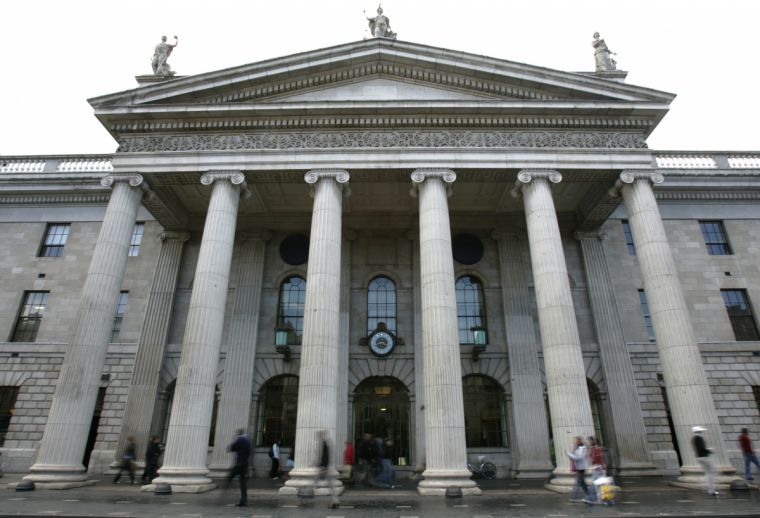Ireland 1916: 100 years since the Easter Rising

The Easter Rising of 1916 was one of the pivotal moments in modern Irish history. It's celebrated as a foundational event in Ireland's struggle for independence and its hundredth anniversary this weekend will be marked with parades and speeches.
It was a bloody and chaotic affair which saw terrible things done by both sides. Beginning on Easter Monday, April 24, it lasted for six days and was a haphazard and piecemeal rebellion easily quashed by the vastly superior British forces. Fifteen of those deemed to be ringleaders were executed over the next few days and their deaths galvanised nationalist feelings. Nearly 1,500 were interned, many of whom had nothing to do with the Rising.
The causes of the Rising, and the events of its aftermath, are immensely complicated and have their origins in the long and generally unhappy story of British involvement in Ireland. But here are 10 things it's interesting to know.
1. It had been brewing a long time
Nationalist sentiment had been growing in Ireland ever since the Famine of 1845-47. Repeated attempts during the second half of the 19th century to bring in Home Rule, led by Prime Minister WE Gladstone, had failed partly because some nationalists wanted full independence and partly because of the opposition of die-hard Unionists in the North.
2. The rebels didn't have much support
Most Home-Rulers or supporters of independence were opposed to the violent tactics of men like Patrick Pearse and James Connolly, who led the Rising. But organisations like the Irish Republican Brotherhood and the Irish Volunteers were prepared to use violence to get independence, while the Ulster Volunteers in the North were prepared to used violence to remain part of Britain.
3. The Republican movement was split
When the First World War broke out in 1914, the leader of the Irish Nationalist Party, John Redmond, accepted that Home Rule would have to wait until the end of the war. Many Irishmen fought in the British Army. Some saw the war as an opportunity, though, and 1916 was a crucial point. It was obvious the war would last a lot longer than anyone had thought and the British army was focused on preparations for the Battle of the Somme. There were few troops in Ireland.
4. The rebels were poorly armed
Sir Roger Casement– notorious for his 'Black Diaries' said to record lurid sexual adventures, honoured for his exposure of the appalling human rights abuses perpetrated by rubber barons in Peru – attempted to land weapons for the Republican forces but his ship was intercepted by the Royal Navy. Casement was hanged as a traitor.
5. They weren't very good at rebellion
In Dublin the rebels set out to capture the most prominent buildings in Dublin, including the General Post Office, which became their headquarters. They failed to capture Dublin Castle and were not well organised. The rebels appear to have thought they had far more support than they did. Pearse told his mother he was certain to be shot. Outside the capital there were sporadic and badly coordinated risings that were easily put down.
6. The British were prepared to be brutal
General Sir John French, in London, ordered four divisions to be sent to Dublin. They attacked the rebels on Wednesday, using a gunboat, the Helga, to bombard their positions. Civilian casualties were high, partly because the rebels wore no uniforms and it was difficult to distinguish them. Little attempt was made to try, however. Cases of British soldiers executing non-combatants roused much resentment.
7. The rebels didn't attract much sympathy from Dubliners
The rebels surrendered on Saturday April 29 and were marched across Dublin to prison the following day. They were jeered by townspeople who had seen their city wrecked. The rebels had also shot and clubbed civilians who opposed them.
8. The British revenge was a PR disaster
The execution of so many ringleaders – including Connolly, who was tied to a chair and shot as he was so badly wounded – caused a revulsion of feeling among Irish people. Asquith, the British Prime Minister, sacked General Maxwell, who was responsible, but the damage had been done. Ireland had its martyrs.
9. Most of those who died were civilians
In total at least 485 people died, 260 of them civilians. Most of these were killed by British forces using bartillery and heavy machine guns. The British forces took the heavier casualties; 126 died, plus 17 police.
10. Ireland has had mixed memories of the Rising
Hard-line Republicans always venerated the rebels. However, with the advent of the Troubles in the 1970s they were seen by many as just another group of terrorists. In 1976 it took the unprecedented step of proscribing a 1916 commemoration ceremony at the GPO organised by Sinn Féin and the Republican commemoration Committee. Opinion shifted again with the Peace Process that brought the violence to an end.
The Easter Rising's place in Irish history will continue to be contested. From this distance in time there is perhaps not to be said for it; Ireland would have gained its independence anyway, and perhaps without the bloodshed that accompanied it. But history is what happened; we can try to understand it, but we cannot change it.











